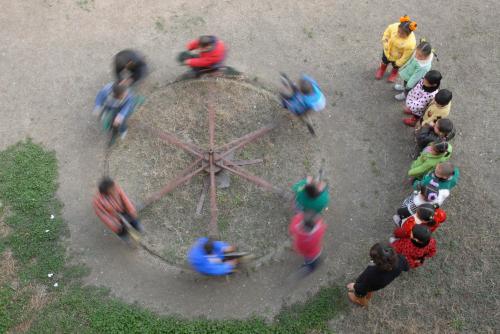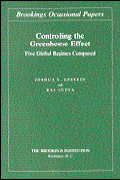This post originally appeared on U.S. News and World Report’s Knowledge Bank blog.
To the delight of many school kids, including my own, summer is finally upon us. The next couple of months for them will be filled with athletic camps, swimming parties, barbecues, and stays at Grandma’s house. And for my preschooler, he will be celebrating a late summer birthday.
If we were holding this conversation at a social gathering, my mention of both a male preschooler and a late summer birthday in the same sentence might lead you to a follow-up question I’ve heard in these settings: “Are you going to redshirt him?” And knowing that I conduct education policy research professionally, you might press me further, “Does it actually pay off?” Allow me to use this space to answer this question that many parents have faced.
Academic redshirting is the practice where a five-year-old child’s caretaker chooses not to enroll her or, more commonly, him in kindergarten even though he is of appropriate age by the state’s cut-off date for enrollment. Rather, children who are redshirted temporarily delay enrollment and thus start kindergarten one year older than they otherwise would have been.
It’s worth taking a moment to first talk about the prevalence of redshirting and who is doing it. Depending on the data, estimates of redshirting rates range between 3.5-5.5 percent of children eligible to enroll in kindergarten based on their age. Over 70 percent of redshirted children were born in the summer months and it is twice as common among boys as among girls. It is also significantly more common among white students—roughly 6 percent of white students are redshirted compared to less than 3 percent of Asian students, and 2 percent or less among black and Hispanic children.
Redshirting also appears to be a bit of a luxury item: redshirting is nearly twice as prevalent in schools serving affluent student bodies as it is among those whose mean household income was close to the poverty line. This finding is unsurprising, given that the choice to redshirt may mean sending your child to preschool or daycare one additional year before kindergarten, which could be financially prohibitive among some low-income families.
As to whether redshirting pays off, there’s a popular notion that it does. After all, widely-cited research has shown a modest but significant correlation between initial age differences in children have long-lasting effects on student performance across many developed countries. These relationships between relative age and student outcomes were popularized by media accounts and, notably, in Malcolm Gladwell’s bestselling book Outliers.
What the popular notion misses, however, is all of the follow-up research studies that have continued to probe this question in the years since that first study was published. According to these studies, there are two hypothesized effects that are confounded in the well-known correlation between age and student outcomes. The first is the age-at-test effect, which says two kids taking the same test at the same time will give an advantage to the older kid purely based on the mechanical relationship between age, maturity, and cognitive development. The second is the relative-age effect, which is the additional advantage a child receives by being the oldest, and therefore highest performing, in the classroom (e.g., more challenging assignments, assigned to the honors class).
Gladwell’s take in Outliers, and the popular belief, is that this second, relative-age effect is really driving the differences that we see across kids in so many different countries. But these follow-up studies have used novel data sets to carefully separate out the relative-age effect from the age-at-test effect and come to a very different conclusion. Together, these studies suggest that the primary driver of these observed differences is the age-at-test effect. Interestingly, the age-at-test effect may be stronger among males than females; thus parents are likely seeing big differences in cognitive ability among redshirted boys (which could be driving the differences in redshirting prevalence by gender). However, these differences are due to the boys simply being older, and not due to greater advantages from schools or teachers.
The relative-age effect is negligible and could possibly even be negative, meaning that being the oldest, highest-achieving in your class may potentially serve as a disadvantage. In fact, higher relative age has been linked to lower levels of educational attainment, primarily due to a higher likelihood of dropping out of high school among males.
Many parents worry about increasing academic pressure for kindergarteners, questioning whether their child will thrive in an environment where kindergarten is the new first grade and whether redshirting might help provide a leg up. In short, there’s no reason to believe that redshirting your child will instill some long-term educational advantage. While a child’s age at the time of testing does make a difference in early elementary grades, and redshirting will enable him to score closer to the top of the class rather than the bottom, being the oldest in the class does not appear to convey any advantage on its own. Moreover, the testing advantage for being the oldest tends to diminish with time; thus when it comes time to apply to colleges, the child’s age-at-SAT is a minor factor in the grand scheme of things.
So there’s my answer to your question about whether redshirting pays off. And with the length of that belabored response, you can probably also see why I don’t get invited to many social gatherings!









Commentary
How much does it benefit a child to delay kindergarten entry for a year?
June 22, 2016